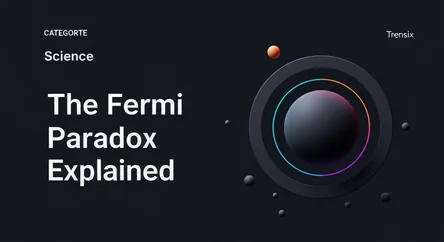Science
The Fermi Paradox Explained

The Fermi Paradox questions the contradiction between the high probability of alien life and the complete lack of evidence. So, where is everybody?
What is it?
The Fermi Paradox, named after physicist Enrico Fermi, highlights the stark contradiction between the high probability of extraterrestrial civilizations existing and the total lack of contact or evidence. Given the billions of stars in our galaxy, many with Earth-like planets, statistics suggest intelligent life should be common. Yet, our telescopes have found no signals, no probes, no signs of cosmic engineering. The paradox is best summarized by Fermi's simple, profound question: "Where is everybody?" It challenges our assumptions about life in the universe and has spawned dozens of potential explanations.
Why is it trending?
Interest in the Fermi Paradox is fueled by modern astronomy. Discoveries of thousands of exoplanets, including potentially habitable ones, by missions like the James Webb Space Telescope (JWST) make the silence from the stars even more puzzling. JWST's ability to analyze exoplanet atmospheres for biosignatures keeps the search for life in the headlines. Additionally, ongoing discussions about UFOs/UAPs (Unidentified Aerial Phenomena) and private space ventures like SpaceX planning for interstellar travel keep the topic relevant and exciting for the public.
How does it affect people?
The paradox profoundly impacts our perspective on humanity's place in the cosmos. It forces us to confront fundamental questions: Are we truly alone? Are we the first intelligent species? Or is there a "Great Filter"—a universal challenge that no civilization has yet surpassed? This concept encourages us to consider the long-term survival of our own species. It also inspires scientific endeavors like the Search for Extraterrestrial Intelligence (SETI) and pushes innovation in space exploration, shaping our future as we look to the stars for answers.